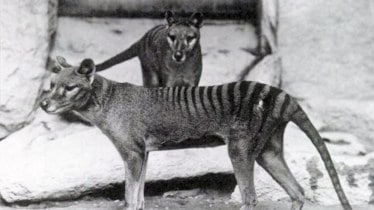Colossal Biosciences is making significant strides in its ambitious project to bring back the thylacine, also known as the Tasmanian tiger, a species that has been extinct since 1936. The company has recently announced a series of groundbreaking successes across various stages of its de-extinction pipeline, bringing it closer to returning this iconic marsupial to its native Australia.
One of the major achievements includes the creation of the most complete and related ancient genome ever assembled, with over 99.9% accuracy. The new genome is about 3 billion bases long and includes difficult repetitive elements, which are challenging to assemble even for living species. This genomic blueprint is essential for the de-extinction process.
Colossal’s Chief Science Officer, Beth Shapiro, highlighted the exceptional quality of the thylacine samples, noting that they allowed for unprecedented advancements in ancient DNA methods. Alongside the genomic work, the team has also isolated long RNA molecules from a 110-year-old thylacine head, which provides insights into gene expression, further helping in understanding of the species.
In addition to genomic breakthroughs, Colossal has also made significant strides in genetic engineering. The thylacine team has identified “Thylacine Wolf Accelerated Regions” (TWARs) in the genome that contribute to craniofacial shape. Through innovative genetic editing techniques, they have successfully altered the skull development of mice, proving that these regions can drive changes in morphology.
The project has also seen advances in assisted reproductive technologies (ART) for the fat-tailed dunnart, the thylacine’s closest living relative. Colossal has optimised methods to induce ovulation in dunnarts, marking a first in marsupial ART. This technology is critical for creating viable embryos that can carry the edited thylacine genomes. Additionally, the team has made history by successfully growing fertilized dunnart embryos in an artificial uterus, surpassing previous attempts in marsupial reproduction.
